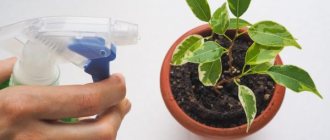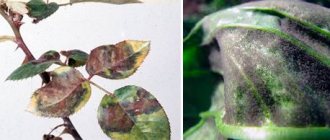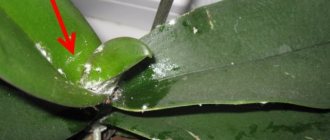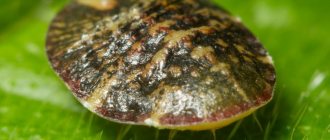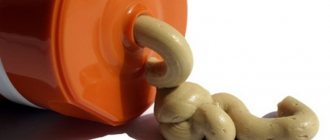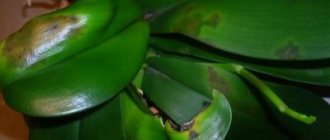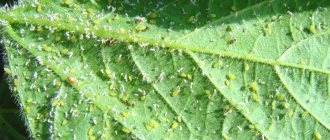A person who loves plants faces problems when growing them, and it is often very difficult to predict what kind of attack will strike the seedlings in a particular case; today we will look at the white coating on the leaves. Getting rid of plaque will improve their appearance and save it from a certain disease that caused such disorders.
How to cure white bloom on indoor flowers? Causes and methods of control
When growing flowers at home, gardeners often encounter some difficulties, the most common of which is a white coating on the flowers themselves and in the pot.
In order to approach treatment correctly, you need to understand the reasons for the appearance of plaque, of which there may be several. The main reason for the development of diseases of indoor plants is the organization of improper care. As a result, favorable conditions are created for the life of parasitic insects, fungi and other diseases.
White coating on indoor flowers: reasons
The most common cause of white plaque on the body of a plant and its leaves is damage to:
- powdery and downy mildew
- mealybugs
- mold
- gray rot
Therefore, it is necessary to understand the characteristics of each disease in order to choose the right drugs for treatment.
Powdery mildew
The leaves of indoor flowers quickly become covered with a white coating due to damage by mycelium - microscopic fungi. The disease is dangerous due to its speed of spread, and if urgent measures are not taken, the plants will soon die.
The disease is caused by the fungi “Sphaerothecarannosa”, the genus of which has many varieties. Therefore, any plant can become infected with powdery mildew.
A favorable environment for the development of this type of fungus is an increased level of humidity in the room, as well as sudden changes in temperature.
Fungal spores can easily migrate from one plant to another during watering, on the legs of insects and with air currents, so the disease is contagious. The infected plant is isolated and preventive treatments are carried out on all flowers.
The development of powdery mildew can be caused by excessive fertilizing with nitrogen fertilizers and calcium deficiency in combination with high temperature and humidity in the room.
Downy mildew
This is a disease related to powdery mildew, so the causes of their occurrence are identical, but the manifestations are significantly different. When affected by powdery mildew, a white fluffy coating formed by the mycelium spreads along the outer side of the leaf blade.
With downy mildew, the plaque is concentrated on the inside of the leaves, and their surface is covered with yellowish spots with a whitish coating that has a purple tint.
Mealybugs
These are parasites, as a result of whose vital activity a white sticky coating, similar in structure to cotton wool, is formed on the leaves and stems of plants. These insects settle on the inside of the leaves and feed on the sap of the plant, which leads to its death.
Mold
The formation of mold spots on the leaves is the result of infection by fungi - botrytis and mycelium. Mold appears as fibrous or fleecy substances covered in dust.
The disease is the result of frequent spraying of flowers, which results in the formation of excess moisture, which is a favorable environment for the development of fungi.
Mold must be combated, otherwise the process of rotting will begin and the plant will die.
Gray rot
Fragmented spots of white plaque with a gray tint are initially concentrated on the stems and leaf petioles. But the disease quickly spreads throughout the plant. Therefore, you need to be extremely careful so that gray rot does not destroy all your home greens, because there is no cure for this disease.
All these diseases are contagious and are caused by improper care, and in particular, increased levels of humidity and temperature.
Leaf hygiene
The impeccable appearance of a plant indicates, first of all, that it is healthy. But sometimes even a healthy plant looks untidy, and the reason for this may be dust settled on the leaves.
Any housewife knows how quickly dust accumulates in a room, so regular cleaning is a routine but necessary procedure. Dust settled on the leaves of plants, when water gets on them, turns into dirt, which must also be removed regularly: dust and dirt interfere with the process of photosynthesis and evaporation of moisture, attract pests and create favorable conditions for the development of diseases .
Procedure for cleaning leaves:
- wipe the leaf plates once or twice a week with a soft material - a damp cloth or sponge;
- You need to remove dust from both the top and bottom sides of the leaves;
- Carry out the procedure in the morning or afternoon so that the leaves have time to dry by evening;
- very dusty or dirty leaves can be washed with soapy water, which should then be rinsed off with clean water. If you use alkali to wash the leaves, cover the substrate with film.
Leaves covered with fluff or lint are not washed, but are cleaned of dust with a brush with soft, thick bristles.
Using a vitamin cocktail
You can improve your orchid’s health by spraying the leaves with a vitamin cocktail. It is prepared from a mixture of vitamins :
- IN 1;
- AT 6;
- B12 (one ampoule of each);
- Dissolved in 1 liter of water.
It is enough to spray the orchid leaves once or twice a month with this composition
Indoor air humidity
Sometimes the tips of the leaves dry out, and dark brown spots form on the leaf blades. The reason for this is that the air in the room is too dry, and many decorative foliage plants require high humidity. What can be done to prevent the leaves from losing their attractiveness? Here are some ways to make dry air more humid:
- Small containers with water are placed between the plants, which, evaporating, saturates the air with moisture;
- pots with plants are placed on pallets with wet expanded clay or pebbles;
- the leaves are regularly wiped with a damp sponge and from time to time the moisture-loving plants are washed in the shower;
- in winter, when the air in the room is dried out by the heating operating at full power, barely wrung out wet towels are thrown over the radiators;
- The easiest way to increase the humidity level in a room is with a household electric humidifier.
Shower for ficus
Ficus is a living organism, and it also loves to swim. But if large-leaved ficus can still be dealt with manually, then plants with small leaves (ficus Benjamin, fern, dracaena, etc.) are much more difficult to clean. A shower, which many houseplants love, will help here.
When arranging a bath for your green friends, you need to protect the soil from washing out (with film or cloth), monitor the water pressure, which should be very small, and its temperature – no more than 30 degrees. If the ficus is very dirty, then you can use a weak solution of shampoo or baby soap, only after cleansing you need to thoroughly rinse them off the leaves.
A clean and healthy plant is the best decoration for your home interior. We hope that the little tricks you can use to wipe your ficus to make the leaves shine will be useful to you in practice.
Traditional methods
The principle of operation of home control methods is that plants are treated with emulsions, tinctures and substances that are supposed to remove shield aphids. Some of them have questionable effects, because sometimes they do more harm than good. After processing with onions, garlic, kerosene and alcohol, a burn is quite possible.
Oil emulsions and other similar substances form a film on the leaves that blocks the access of oxygen. At the same time, plants stop “breathing,” and photosynthesis, which they need to produce organic substances that promote growth and development, stops. Scale insects, as a rule, settle under the leaf where the stomata are located.
Soap-based solutions and tobacco tincture have shown positive results in combination with mechanical removal. Accordingly, they need to be used many times. The soap solution also forms an impermeable film on the leaves, so it must be washed off after 24 hours.
The most common folk mixtures:
- Baby soap : 1 liter of water, 1.5 tsp. grated cosmetic product. The solution is applied to large-leaved plants using a sponge, cotton wool or cloth. Stand for 15 minutes. And it is washed off with a shower (the ground must be protected from water).
- Kerosene-soap mixture : 10 g of kerosene, 50 g of laundry soap, 2 crystals of manganese. Apply the solution to places where insects accumulate with a cotton swab, cloth or brush. Leave for 30 minutes, rinse.
- Hot pepper infusion : 4 medium chilies, 500 ml water. Cut the pods, boil for 20 minutes, cool, strain, spray. Each time the broth is prepared fresh.
- Garlic (onion) infusion : 5 cloves of garlic or 1 medium onion. Chop the vegetables and add 150 ml of water. Leave for at least 5 hours, add 1 tsp. grated soap, apply using a sprayer.
- Infusion of walnut leaves : take 300 g of crushed raw materials, 1 liter of boiling water. Leave for 24 hours, treat the leaf blades of the plant on both sides after preliminary washing with soap, leave for 24 hours and rinse. For a stronger effect, you can add another 150 g of tobacco leaves to the tincture.
- Soap and alcohol solution : mix 1 liter of water, 10 ml of ethylene, 15 g of soap. Use carefully on plants with soft or thin leaves, as they are extremely sensitive to alcohol. The resulting mixture is applied with a brush first to one leaf and left for about a day. Only after a successful reaction to this test can further processing of the entire plant be carried out carefully.
This is interesting: Gymnocalycium (red-headed cactus) at home
Olive oil
You can wipe the leaves with olive oil. It is necessary to apply it to a cloth or sponge and treat the plate from base to tip. Excess must be removed by blotting the leaves with a dry and clean napkin.
Before using the oil, you need to take into account that it will create a film on the surface of the plant, due to which the flower may stop absorbing moisture. In addition, this will make it difficult for oxygen to reach the leaves, which will affect development.
Milk
Milk is also used to add shine - you need to make a mixture by combining the drink in equal parts with water. After this, the resulting liquid is applied to a sponge and the leaves are wiped with it. The shine is not strong, but noticeable.
The solution may leave a film on some plates, as is the case with olive oil. Therefore, it is recommended to increase the amount of water, and, on the contrary, reduce the volume of milk. Then you will get a lighter product that will be safe for the flower.
If a solution with a lower concentration of milk is used, the shine will also be reduced. However, it can be neglected so that the development of pets does not stop for the sake of aesthetic appeal alone.
Beer
It is recommended to use beer for large plates. In addition, it is better to take a product with a short shelf life. For the solution you need to prepare 1 part beer and 1 part water, apply it to a sponge and wipe the surface. It will become smooth and dark green.
It should be noted that in the spring and summer, such a mixture will attract midges due to the taste characteristics of the beer and its smell. Therefore, it is better to use this method in winter or autumn, when there are few or no insects.
Vinegar
This substance is often used to add shine. It is necessary to dilute 1 part vinegar and 3 parts water, as in the previous methods, apply the resulting liquid to a sponge and wipe the plates. It is better to get rid of the remaining part of the solution, as it spreads unpleasant odors.
The proportions must be strictly observed, otherwise the plants may be damaged. So, yellow spots may appear on them, and the shoots may become deformed.
Egg yolk
The use of egg yolk is the most popular option; most gardeners use it. The yolk is applied to a brush, with which you need to rub the leaf until it shines. Excess product can be removed with a paper towel or napkin.
Just like in the situation with beer, it is better not to use the yolk in the summer, as its smell can attract insects.
Prevention is easier than cure
Fixing a problem is always more difficult than preventing it. Following simple rules saves time and allows you to grow indoor flowers healthy and beautiful.
- Do not water flowers with tap water. It needs to be defended, and for prevention it is sometimes recommended to soften it with citric acid.
- Do not overfill and watch the drainage holes so that they do not become clogged.
- Keep the container with the plant away from heating devices, spray and humidify the air in the room more often.
- The volume of the pot should be selected according to the size of the flower.
- To prevent fungal diseases, activated carbon is used once a month. A good disinfectant is a weak solution of potassium permanganate, which can be used for irrigation instead of ordinary water.
- In winter, fertilizing with fertilizers should be stopped, and loosening the soil will only be beneficial.
Treatment of different types of white plaque
In most cases, a white coating on the leaves and soil is a signal that the plant is not maintained correctly. Therefore, it is necessary to change these conditions to the correct ones, and, if necessary, begin immediate treatment of the flower.
How to get rid of mold?
An algorithm for certain actions is required here:
- if mold appears only on the top layer of soil, then you can simply remove it by collecting it with a spoon;
- if there is a need for replanting, the roots of the extracted plant should be washed, dried and only then replanted into new soil;
- after these operations, it is recommended to sprinkle the soil with soda or cinnamon;
- If mold appears on the leaves, they should be wiped with damp paper napkins.
It is better to perform the procedure outside in bright sunlight, if the air temperature allows. After treatment, the flower must be sprayed with fungicides.
It is better to cut off such affected leaves and discard them. It is very difficult to remove active mold that has penetrated the inside of the leaf.
What to do if it looks like cotton wool?
Cotton wool is a sign of the presence of mealybugs. To get rid of this parasite, you don’t have to run to the store for chemicals. There are quite effective folk methods.
- Brew calendula powder (sold in a pharmacy) like tea, cool and treat the plant with it (per 100 g of powder - 1 liter of water);
- chop the garlic, pour boiling water over it and let it brew for 3-4 hours, apply to the leaves using a sponge;
- Dilute 1 tablespoon of olive oil in 0.5 liters of water and spray with a spray bottle.
If the above procedures do not help, it means that the lesion has eaten deep. Then you will have to use chemicals.
The following drugs help well against scale insects:
- Decis;
- Bi-58;
- Fitoverm;
- Tsvetofos.
Preventive measures
Simple manipulations will prevent the invasion of dangerous mealybugs and save gardeners from unnecessary hassle and expense:
- removal of dead leaves and buds;
- regular care, moderate watering;
- constant inspection of all parts of the plant;
- supporting plants with fertilizers, optimal temperature and light conditions;
- careful inspection of seedlings or adult flowers when purchasing.
Learn more about what mealybugs are and how to deal with them in the following video:
Did you like the article? Subscribe to site updates via RSS, or follow updates on VKontakte, Odnoklassniki, Facebook or Twitter.
Subscribe to updates by E-Mail:
Tell your friends!
I got caught like that once. I bought an orchid at the store on the occasion of a discount and brought it home. And a few days later I discovered this white muck, not only on purchased flowers, but also on home flowers. “Atkara” helps well against scale insects, I sprayed it for two weeks, saved mine, but the store-bought one still disappeared. You can also wash the leaves with water with the addition of vodka, and collect this dirty trick by hand. The scale insects hide, albeit well, in the curls of the leaves.
How to deal with plaque
But this procedure is not always possible to perform immediately. In this case, you can do the following:
- Remove about two centimeters of the top layer of soil so that the mold and root system do not come into contact.
- Bring the watering regime back to normal and avoid over-moistening the soil.
- If the soil is heavy and dense, it should be loosened carefully. This will help remove excess water and normalize gas exchange.
If using these methods it is not possible to remove the white plaque, then you can use folk or store-bought remedies to combat mold.
Folk remedies
If the focus of infection is small, and the white coating appeared not so long ago, then you do not need to use strong chemicals.
a solution of citric acid is often used to cultivate land . Take 2-3 grams per glass of water. This product can be watered no more than twice a month. It can be used for plants that can grow in acidic soil.
You can also use regular garlic . To do this, make an infusion or bury several cloves around the flower. During watering, phytoncides will enter the soil, which prevent the spread of pathogens.
Wood ash can also disinfect the soil. It also quickly removes excess moisture from the soil. Depending on its capacity, take from 30 to 100 grams of ash per pot. It is sprinkled around the flower and mixed with the top layer of soil. It is important not to touch the roots of the plant.
Purchased funds
To combat white plaque, the following drugs are used:
- Sarfun 500 sc . Produced in the form of a concentrated suspension. This is a broad-spectrum fungicide that has a therapeutic effect. The plant and soil surface are sprayed with it.
It is best to do this during the growing season. The drug is also used to prevent the appearance of mold on the ground.
Protects the flower for a month and is not washed off when spraying the leaves. Destroys the fungus in about a day.
It is recommended to perform the procedure in the morning or evening. When processing the plant, it is important to ensure that the drug does not get into your eyes. Topsin M. This is a systemic contact fungicide that is used to treat and prevent fungal infections. In addition, it copes well with parasites.
The main active ingredient is topsin. Produced in the form of an emulsion or powder. Has a beneficial effect on shoots. After treatment, the flower begins to develop better. The action begins on the first day after treatment. The procedure is repeated after 2 weeks.
Azophos . One of the most effective drugs. Quickly suppresses the development of fungus, and also provides nutrition to the flower, nourishes it and promotes growth.
Its action is similar to Bordeaux mixture, since the drug destroys fungal spores.
Powdery mildew is a disease caused by ectoparasitic microscopic fungi; it can develop not only on the leaves, but also on the fruits of some plants, as well as on the above-ground parts of the shoots.
To identify the problem, you can conduct a small experiment - try rubbing the area that was affected by the disease. If it really is powdery mildew, small pellets appear on your fingers; they will consist of mycelium threads, and very small ones at that. Gardeners advise fighting this fungus with drugs - fungicides developed on a sulfur basis.
Mold Removal
The fight against mold consists of removing the affected parts of indoor flowers and preventive antifungal treatments. It is also important to restore the microclimate and create suitable conditions for plants.
When treating white plaque, you need to carry out comprehensive measures and regularly inspect healthy flowers so as not to miss the moment and start treatment in a timely manner. But treating diseases is much more difficult than preventing their development. Therefore, systemic preventive measures should be carried out.
This is interesting: Terms and rules for harvesting beet roots
Aktara
Strong insecticide with mixed effects. Used for surface application and watering. Price from 12 rub. for 1 g of dry powder. It is considered one of the most effective, since it has an intestinal contact effect on adult insects, their larvae and clutches.
Apply externally to flowers from a spray bottle. Dissolves at the rate of 1 g per 1.2 liters of water. Then the pot should be covered with a bag and left for about an hour.
The product is not washed off. Its effect begins within 24 hours when applied externally and after 2-4 days when watered. To apply to the soil, 1 g of the product is dissolved in 10 liters of water.
The mixed procedure is performed repeatedly (from 2 to 5 times with a difference of 10-14 days), focusing on the air temperature.
Green soap
Brown or greenish liquid with a soapy odor. The main component is potassium salts, which have a detrimental effect on pests, destroying the habitat and blocking the access of oxygen to scale insects, their eggs and larvae, without which the parasites die.
Dilute 250 ml in 10 liters of water, mix thoroughly, and evenly spray the green part of the plant. Treatment should be performed 3-4 times with an interval of 3 weeks. Price from 29 rub. for 250 ml. According to reviews on the forums, it is a very effective tool and receives positive ratings.
Fitoverm
Fitoverm is a biological preparation that is safe for people and animals. Many experienced gardeners advise starting to process plants with it. Price from 9 rub. for 2 ml.
A safe solution is made from 2 ml of product and 200 ml of water. Treat by spraying or wiping. Designed for contact action. In recent years, scale insects have become accustomed to the drug.
When the plant is seriously affected, more toxic substances are chosen (Vermitek, Karbofos, Actellik), spraying them on the street.
Important: chemical treatment must be carried out wearing personal protective equipment, avoiding contact of the solution on the skin and mucous membranes (eyes, mouth, respiratory organs) as much as possible. After contact with the drugs, wash exposed areas of the body with running water and soap.
Cause of powdery mildew
The fungus lives in almost every indoor plant, but it does not always manifest itself and begin to destroy the plants. When the plant is provided with timely watering and proper care, mealy fungi have no chance. Fungi parasitize and reproduce in the following cases:
- If it's cool outside, about 12 - 15 degrees, rainy season, high humidity. Outdoor conditions do not affect indoor plants as much as they do on plants located on the balcony. Therefore, in bad weather, balcony plants should be moved to a warmer place.
- If the soil is oversaturated with nitrogen
- Lots of vegetation in the pot and little space
- Improper care, not timely watering. If the plant is often watered and the earthen lump does not have time to dry out, or vice versa, the earth constantly dries out, and then it is watered abundantly
Since this disease is portable, it is very easy to infect other plants:
- If you touched a diseased plant, then touch a healthy one
- If mealy fungi get into the irrigation water
- Even when airborne, spores can infect neighboring plants.
Avoid contact with fungus
White coating on leaves
Most often, the cause of the appearance of white plaque on the leaves of indoor plants is microscopic fungi - powdery mildew mycelium . This disease very quickly covers the entire plant and destroys it.
White coating on indoor flowers. Photo
The most common causes of powdery mildew are:
cyclamen;- Kalanchoe;
- chrysanthemum;
- ficus;
- begonias;
- aglaonema.
It is possible and necessary to fight powdery mildew, but first of all you should pay more attention to the care regimen for your indoor plant. If your flower is affected by powdery mildew, pay attention to:
- watering frequency;
- stagnation of water in the tray of the pot;
- change in air temperature in the room.
In order to save a plant from powdery plaque, it is necessary to treat its leaves with a fungicide, but first remove the damaged leaves. The fungicide solution should be applied to the leaves of the indoor flower from a spray bottle once every 10 days. The minimum amount of processing is 3-5 times.
We create the right care
To get rid of white plaque, it is necessary to provide comprehensive care for the diseased plant. First you need to understand the agricultural technology of cultivation:
- Water the plant only when the top layer of soil begins to dry out.
- When treating a plant, you cannot spray it (with the exception of medicinal purposes). This also applies to healthy plants for preventive purposes.
- The flower needs more sunny days, it is advisable to move the flower to a dry and warm place, with little direct sunlight
- Withered and dry leaves and buds must be torn off
- With this disease, you cannot use any fertilizers or fertilizers.
Hide the plant from direct sunlight
Provide the plant with proper care, otherwise powdery mildew will become your regular visitor. Now let's move on to treating the disease.
Use of fungicides
Chemical measures to combat powdery mildew, when used in a timely and correct manner, are quite effective.
Fungicides (fungus - fungus and caedo - kill) are chemicals used to combat fungal diseases of plants.
Of the modern fungicides against powdery mildew, it is worth noting the following drugs: Bayleton, Zato, Quadris, Rayok, Skor, Tilt, Topaz, Topsin, Fundazim, Fundazol, Acrobat Mts 69%, Kuproskat, Mancozeb (manganese dithiourea), Thiovit Jet (colloidal sulfur), Impact, Strobi are broad-spectrum fungicides (Basf). All drugs are used in accordance with the instructions, without exceeding the dosage.
There have been cases of the emergence of fungal races resistant to chemicals on some crops, so the development of varieties resistant to powdery mildew is an extremely pressing issue.
Signs of appearance
In order to understand what kind of plaque is on your plant, you need to examine it. A white coating may appear on the leaves - this is generally the first sign of damage to the plant by powdery mildew. Powdery mildew develops well in high humidity.
Powdery mildew is considered a disease of garden plants. But it can also be found on indoor plants.
The spread of this disease to indoor plants can be caused by the soil used for planting. If you worked in the garden, you could have carried it on your clothes or shoes. Ficus trees are especially sensitive to this disease.
But white bloom can also be a sign of pest damage to the plant. On house flowers, a white coating like cotton wool can be caused by mealybugs. This pest also creates a sticky coating on the leaves of indoor plants. It manifests itself differently on different indoor plants.
With any attack by this pest, the plants become covered with a white coating, subsequently the plant becomes covered with a sticky coating, the shoots are bent, growth stops, as this pest sucks out the juice and covers the leaves with a sticky coating. This significantly reduces the ability of any plant to develop and grow fully.
Less commonly, but it is possible, there may be aphids, a large accumulation of these pests can form a plaque on the plant.
Having understood the reason, it is necessary to begin the prevention, treatment and destruction of pests and diseases.
There may also be a white coating on the soil - this is the main sign of a fungal disease, and this occurs due to excessive watering and poor drainage in the pot with the plant.
So, the causes of white plaque on indoor plants can be caused by pests and fungal diseases.
Prevention measures
Mealybugs are quite difficult to exterminate, severely depleting plants. Therefore, it is much more effective to prevent their occurrence.
- Compliance with the rules of care is the most important preventive measure, since pests, as a rule, attack weakened plants.
- Regular examination of “pets” will help to recognize infection at an early stage.
- Before you bring a new plant into your home, you need to inspect it carefully.
- Quarantine for newly acquired pets is at least 30 days.
- Soil disinfection.
- Thorough disinfection of pots after diseased flowers.
In order to fight a pest, you should know its preferences and biological characteristics. Eliminating conditions favorable for parasites is the main task of preventing infection.

